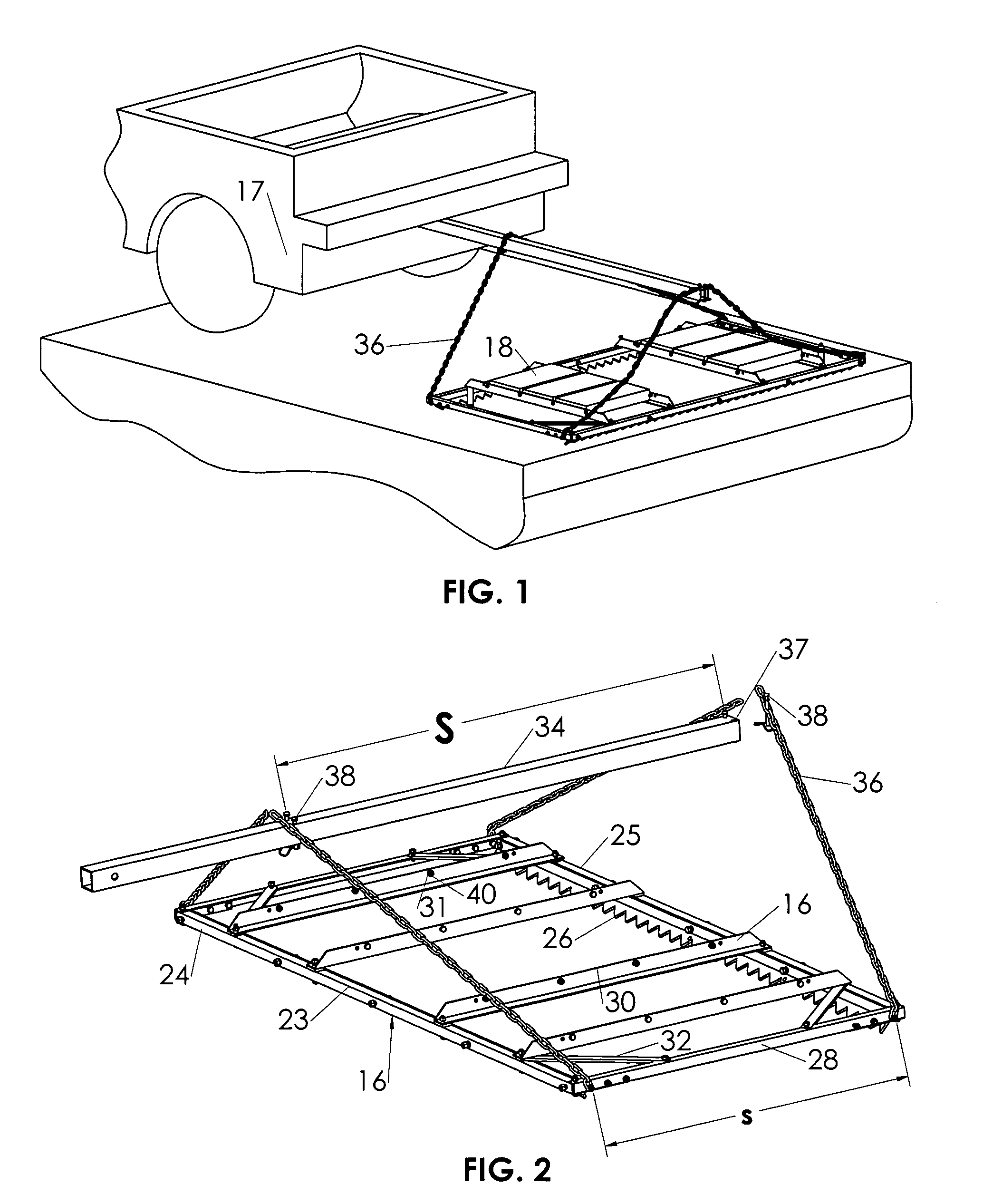Bi-directional drag grader
- Summary
- Abstract
- Description
- Claims
- Application Information
AI Technical Summary
Benefits of technology
Problems solved by technology
Method used
Image
Examples
Embodiment Construction
[0028]A preferred embodiment of the present invention is illustrated in FIG. 1 (view in use) and FIG. 2 (complete assembly).
[0029]FIG. 1 shows the complete assembly connected to a tow vehicle 17. Standard cement blocks 18 are added to the assembly for weight. The cutaway view of the vehicle 17 is shown moving forward thus tensioning the forward chain lengths 36 while the rearward chain lengths 36 are slackened. The chain lengths 36 are of continuous length as depicted in FIG. 1. In practice, it may be preferred by the operator to separate the chain lengths as depicted in FIG. 2. The blades 26 are shown with the teeth down and inward. In the forward direction, the rear blade performs the majority of the cutting force to the surface. When the vehicle moves in reverse, the rearward chain lengths 36 will tension and the forward blade 26 performs the majority of the cutting force to the surface. The ability to move a drag grader bi-directionally allows the operator the ease of not having...
PUM
 Login to View More
Login to View More Abstract
Description
Claims
Application Information
 Login to View More
Login to View More - R&D
- Intellectual Property
- Life Sciences
- Materials
- Tech Scout
- Unparalleled Data Quality
- Higher Quality Content
- 60% Fewer Hallucinations
Browse by: Latest US Patents, China's latest patents, Technical Efficacy Thesaurus, Application Domain, Technology Topic, Popular Technical Reports.
© 2025 PatSnap. All rights reserved.Legal|Privacy policy|Modern Slavery Act Transparency Statement|Sitemap|About US| Contact US: help@patsnap.com



